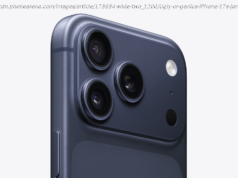‚This is not a trick.‘ Perry shows USA TODAY how uBeam can charge a phone, all over the air.
SANTA MONICA, Calif. — A year ago, Meredith Perry, the founder of a well-capitalized start-up promising a technology revolution — charging smartphones over the air using ultrasound waves — went into self-imposed exile.
No interviews, few appearances. Just heads down on work.
Her company uBeam, flush with $26 million provided by Silicon Valley players eager to crack this thorny modern-day tech problem, had been called a fraud by a former engineer. Media reports compared Perry to Elizabeth Holmes, whose high-flying blood analysis company Theranos has suffered an ignominious fall.
„Our industry is binary, your tech works, or it doesn’t, “ says Perry, 27. „We needed to show that it works.“
In late May, Perry broke her media silence, giving USA TODAY a first, close look at uBeam’s developing technology in action. The approach harnesses ultrasound and optical lasers to charge multiple phones at once at a distance of up to 10 feet. The vision is that one day, people will walk into a uBeam-outfitted room, say a coffee shop, and within seconds, phones will be getting juice.
Concern that she might be called a fraud again were omnipresent during the demonstration. For starters, Perry took this reporter to a nearby T-Mobile store to buy a new Samsung Galaxy S7 for the test, an effort meant to counter skeptics who might wonder if she could fake it by using her own phone.
Related:
„This is not a trick, “ she says, slipping the new device into a custom-made case, an early version of the uBeam technology that, ultimately, it hopes to embed inside smartphones.
Perry flipped the switch on a large white box, about the size of a ceiling tile. A quiet hum filled the conference room as the entrepreneur asked her visitor to pick up the phone and hold it in front of the box about four feet away.
Ping, chirped the smartphone. “Charging, ” read the icon message. And not a cable in sight.
Perry beamed.
For uBeam and other companies pursuing wireless charging, this is a halcyon vision for smartphone users who find themselves tethered to walls and kiosks, all in need of a power outlet. In a blissful, cordless world, tech gadgets never run on empty, powered by energy-broadcasting transmitters hidden away in the walls of cars, businesses and homes.
The technology is at least a year away from commercialization, and it faces significant hurdles from ever getting out the door of this 30-person start-up. Even though it can at present power a handful of phones, it’s not clear what leaps need to be made to charge a busy coffee shop. And consumer questions will linger about safety as well as cost.
Asked when uBeam might hit the market, Perry shook her head. „I’m out of the prediction game, “ she said.
Today, most wireless charging doesn’t quite live up to that title. Most devices require a user to rest the device on a pad, which limits its use while charging.
uBeam is different: its tech broadcasts a beam of high-frequency sound waves that are captured by a receiver lodged in a phone case and reconfigured as electricity. The implicit advantage of uBeam’s approach is that it allows charging while your phone remains in use in your hand.
For the technology that underwrites this vision, Perry has amassed, along with its critics, funding from investors such as Mark Cuban, Yahoo CEO Marissa Mayer and venture firm Andreessen Horowitz, and early on, Upfront Ventures.
It was at Upfront’s conference for investors in February that Perry showed uBeam’s technology was working, according to Axios, and she’s reiterated that success on uBeam’s Twitter feed .
If uBeam or any other company can nail an effortless way to charge devices without cables, it could claim a healthy slice of what promises to be a $37.2 billion pie by 2022, up from $1.9 billion in 2015, according to Allied Market Research.
A large part of that wireless charging growth is being spurred by big ticket items such as electric cars, some of which can charge simply by driving over a large pad that uses induction technology.
But as the number of household and personal items goes electric and wireless, the ability to power them without batteries or recharging could also help users of smaller devices, such as hearing aids.
One challenge could be the perception that always-on ultrasound could be unhealthy to humans. Ultrasound is used to send signals in common medical procedures, such as MRIs and fetal scans, but usually only in bursts.
Perry says the sound waves generated by uBeam tech are safe, and the company will be „conducting third party tests to assure folks the technology is completely safe.“
Another issue is simply whether this technique can generate enough power to keep multiple devices up and running, especially if some are larger than a smartphone.
“In general, just like with any other signal, there’s an issue with it getting weaker the farther away it travels from the transmission source, ” says Alexander Wyglinski, associate professor at Worcester Polytechnic Institute.
Even if uBeam has just cracked the ultrasound charging code, its financial success is dependent more on its partners, says Amy Teng, an analyst with Gartner.
“I’ m sure that a viable technology (using ultrasound) would be dependent on many factors, including ecosystem support and collaborations, ” she says. “uBeam still has a lot it needs to do.”
One early skeptic turned convert is Matt O’ Donnell, whose early career saw him at General Electric and involved with the creation of the MRI, which uses ultrasound to take images of the body.
“When Meredith called me in 2015, I was curious and skeptical as hell, because you just hadn’ t seen efficient airborne transducers, ” says O’ Donnell, dean emeritus at the University of Washington’s college of engineering, who now serves as uBeam’s chief technology advisor. “But holy moly, the leaps they’ ve made in the past 18 months have been impressive.”
The company faces now is a trio of challenges familiar to most startup ventures, looking for reductions in cost and improvements in efficiency while chasing the best possible partnerships, says Mark Suster, whose Upfront Ventures firm led an early round of funding for uBeam.
That means further miniaturizing both the transmitter (into what would amount to a ceiling tile) and the case (it should resemble current phone slip-on covers) while convincing big brands to take the leap.
“Ubiquity is what will improve our customer experience, ” he says, noting that ideally uBeam will, like WiFi, finds its way in chains such as Starbucks, high-end gyms and airport lounges, destinations that could offer uBeam cases to clients as a perk during their visit.
Here’s what USA TODAY observed, which involved a tour of various offices in uBeam’s warren-like, beach-side compound.
After the T-Mobile store visit, that new phone was unboxed and slipped by this reporter into a case fitted with countless small transducers that act as a receiver of the ultrasonic waves. Across the room was the white box, also fitted with thousands of transducers, which creates the sonic beam.
When the phone’s case was held up in the path of ultrasonic beam, the charging icon lit up. Move a few inches away, and the icon vanished. Similarly, when Perry would step in front of the sound waves, blocking them, the icon would turn off.
Start
United States
USA — IT uBeam's Meredith Perry shows her stealth wireless charging technology really works






